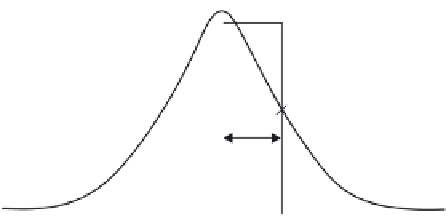Information Technology Reference
In-Depth Information
Because of similarity between software development and transaction-based
applications, we will start introducing concepts in transaction-based Six Sigma as
an introduction to software Six Sigma and software Design for Six Sigma in what
follows. Where we see fit, we start merging concepts and define interfaces between
transaction-based and software Six Sigma applications.
7.2
WHY SIX SIGMA?
Typically, the answer is purely and simply economic. Customers are demanding
it. They want components and systems that work the first time and every time. A
company that cannot provide ever increasing levels of quality, along with competitive
pricing, is headed out of business. There are two ways to get quality in a product. One
is to test exhaustively every product headed for the shipping dock, 100% inspection.
Those that do not pass are sent back for rework, retest, or scrap. And rework can
introduce new faults, which only sends product back through the rework loop once
again. Make no mistake, much of this test, and all of the rework, are overhead. They
cost money but do not contribute to the overall productivity. The other approach to
quality is to build every product perfectly the first time and provide only a minimal
test, if any at all. This would drive the reject rate so low that those units not meeting
specification are treated as disposable scrap. It does involve cost in training, in
process equipment, and in developing partnerships with customers
and
suppliers.
But in the long run, the investments here will pay off, eliminating excessive test
and the entire rework infrastructure releases resources for truly productive tasks.
Overhead goes down, productivity goes up, costs come down, and pricing stays
competitive.
Before diving into Six Sigma terminology, a main enemy threatening any devel-
opment process should be agreed upon:
Variation
. The main target of Six Sigma is
to minimize variation because it is somehow impossible to eliminate it totally. Sigma
(
σ
), as shown in Figure 7.1, in the statisical field is a metric used to represent the
σ
= standard deviation (distance from mean)
µ
= Population Mean
FIGURE 7.1
Standard deviation and population mean.


Search WWH ::

Custom Search